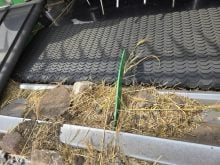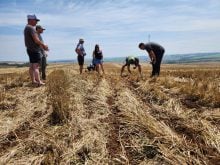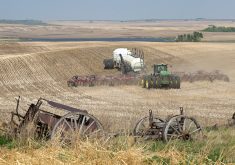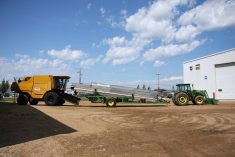What are we going to do when our new well runs dry?
Dig a deeper one.
What are we going to do when that one runs dry?
Drill deeper again and ask why the wells keep running dry.
The prairie moisture cycle has been disrupted. Nobody disputes that point. But how badly is it disrupted and can it be fixed? Nobody knows, says John Pomeroy, director at the Centre for Hydrology at the University of Saskatchewan.
Read Also
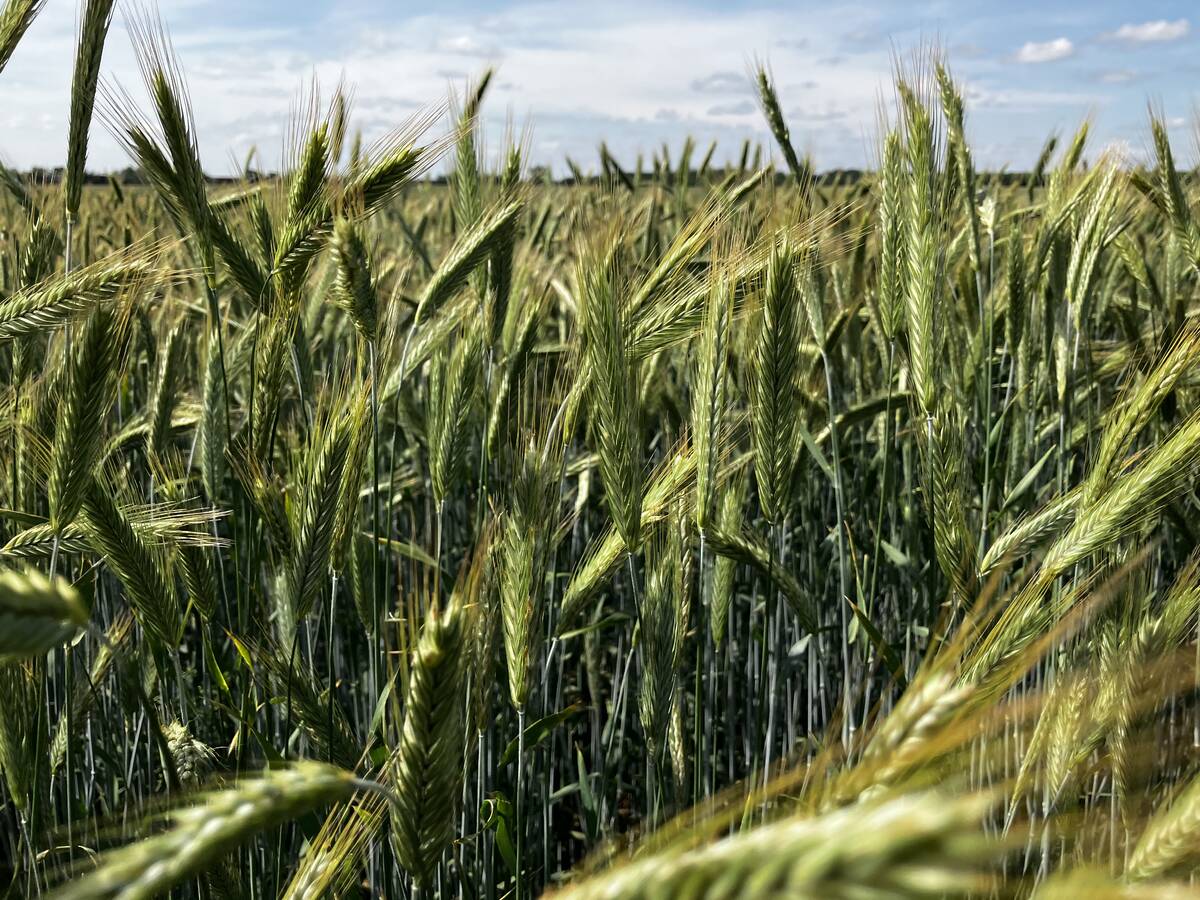
Keep it clean on pre-harvest chemical use
Canadian farmers urged to toe the line on pre-harvest pesticide application and market product restrictions to avoid grain marketing headaches.
Prairie people know they have to go progressively deeper with their wells and as they do, the water is often lower quality than their previous well.
“Most shallow surface aquifers once had very good quality water, but very little storage capacity,” said Pomeroy. Small storage limits the ability to recharge and available water is used quickly.
“These shallow aquifers are connected to the surface so they experience the same rain and drought cycles we experience. They get their water from the moisture cycle, which goes up and down, wet and dry.”
As the Prairies required more water for irrigation, livestock and municipal purposes, shallow wells ran dry and were abandoned in favour of deeper wells.
“There’s much more water underground than on the surface or in the shallow aquifers. Nobody knows how much,” Pomeroy said. “But the flow rate in the deep aquifers is extremely slow and it’s mostly very poor quality.
“There are a few areas with high quality deep water, such as the Assiniboine Delta Aquifer, but most deep water isn’t suitable for agriculture or people.
“A lot of that water was laid down in pre-glacial times, so it’s old. The older it is, the more dissolved solids it has. It can’t be used for anything.”
Pomeroy said it’s easy to see how shallow wells and their high quality water were pumped dry. The water was needed. But other land management factors affect the situation.
Recharging ground water on the Prairies is different from other places, Pomeroy said. Because these shallow aquifers are small, they recharge quickly from potholes and sloughs. Conversely, they also respond quickly to drought or having their recharge sources cut off.
“Recharge absolutely depends on sloughs and potholes. You need water standing for a period of time to force it through that thick till layer.
“Sloughs are mainly filled by snowmelt runoff. Snow is the primary source of water for our prairie water tables. Summer rainfall that runs into the sloughs generally evaporates before it has a chance to recharge the water table.”
Pomeroy said a cool rainy summer will recharge some of the water tables but with 70 percent of prairie sloughs and potholes now drained, every remaining acre of surface water is vital.
“Every time we drain another pothole, we lose one more source of snowmelt water for our shallow aquifers and recharge for those shallower wells.
“There’s another problem with the remaining sloughs.We’re not putting as much snowmelt runoff into those sloughs as we did 20 years ago.”
Farmers and researchers agree that water is the limiting factor on all types of agricultural production on the Prairies. With a limited amount of water most years, the industry has geared itself to maximum use of that precious resource.
Pomeroy said zero till and continuous cropping are robbing the prairies of valuable snowmelt runoff, resulting in groundwater depletion that may be as critical as the 70 percent pothole drainage factor.
“Standing stubble keeps snow out on the fields. It prevents snow from blowing into the sloughs like it once did. That snow used to fill the sloughs. When it melted, the slough was full of water to replenish the aquifers.”
The accompanying factor on upland areas is that zero till allows snowmelt and rainfall to percolate into the soil, resulting in better crops. However, putting moisture to use where it falls means less runoff.
Many farmers say they now farm right through sloughs and potholes that they couldn’t even drive close to before adopting zero till.
“Improvements in farming practices in the past 20 years have given us better yields but these practices have a negative impact on our groundwater,” said Pomeroy
“We’ve designed these highly efficient systems for growing crops and making better use of limited moisture but we’ve left nothing for nature or ground water recharge.
“We don’t know how bad the situation is and we don’t know what constitutes sustainable recharge of groundwater on the Prairies. We’re just beginning to do that research now.”
Pomeroy said that under the auspices of the Drought Research Initiative, studies have begun to give scientists a better grasp of how much water is used by agriculture and how much is left over as a recharge source. They have developed programs to model the water levels in a slough and determine how much goes into replenishing ground water.
“We need to quantify how much runs off and how much is lost to the atmosphere by evapotranspiration through plant growth. So far, the models have only been tested in a few areas of Saskatchewan.”
Average annual precipitation prairie-wide is typically about 350 mm. That varies from year to year and area to area. The number is higher in western Alberta and eastern Manitoba, lower in the Palliser Triangle.
“Typical averages don’t mean much on the Prairies because we so often experience extremes at the high end or low end. But we do know that roughly one-third the annual precipitation comes as snowfall,” said Pomeroy.
“If you leave standing stubble of only 35 mm, you can generally catch the full 100 mm of snow. That’s if it decides to snow at all that winter.
“Leaving higher stubble may catch the snow that blows off your neighbour’s fields, although when it blows, about half tends to sublimate or evaporate, so much of that moisture is lost. It never makes it to a drift or another field.”
Pomeroy said during the driest part of a drought, soil moisture storage is only 100 mm. After a wet fall, snowy winter and wet spring sequence, there can be up to 750 mm of water equivalent.
Evapotranspiration from crops is about four mm per day. Evaporation from small water bodies is about six mm per day.
Then consider how slowly water in a prairie pothole or slough percolates into the aquifer. The recharge rate varies from non-measurable up to 0.2 mm per day.
Only a few wetlands with sandy bottoms allow water to enter the aquifer faster than 0.2 mm per day.
That fact might change attitudes toward trying to drain the remaining 234 million acres of prairie wetlands. If high quality water is important, we may even think about restoring some of those drained sloughs and potholes.
Where’s it going?
Water use in your house and around the farm
- Forty percent of water use in Canadian homes is toilets.
- 35 percent is baths and showers.
- 20 percent is laundry and dishes.
- Five percent is drinking and cooking.
– Source: Agriculture Canada
- Nearly all of the water used to produce livestock in Canada is provided by ground water.
– Source: Environment Canada





